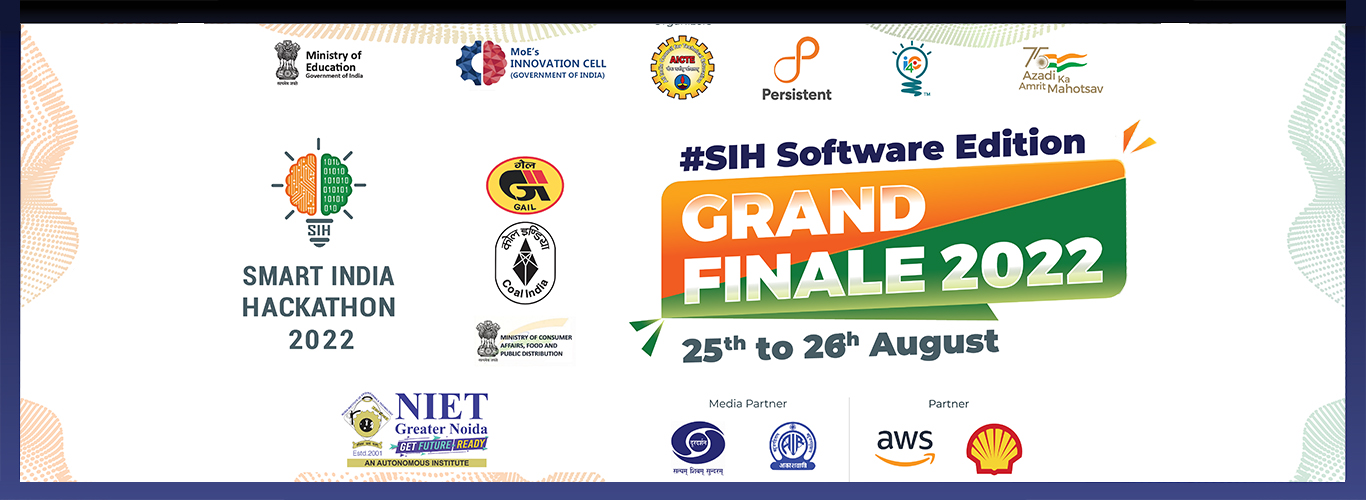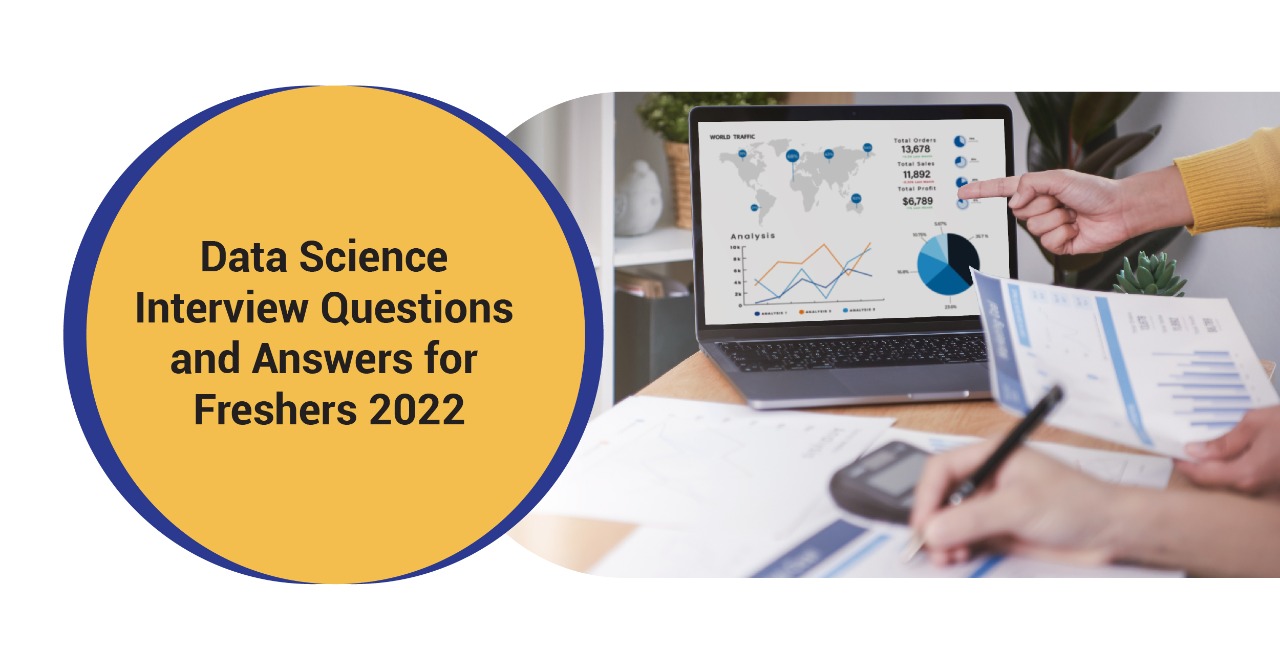The world is undergoing a data-fuelled digital upheaval; therefore, it shouldn’t be surprising that a career in data science is in huge demand in this modern era of big data. Top agencies around the world, like Apple, Intel, Microsoft, Amazon, Google, and Facebook, are constantly hiring data science, graduates and beginners to join their teams.
So, if you’re thinking about how to become a data analyst or data scientist, then you must be prepared to wow potential employers with your expertise and demonstrate that you are technically skilled with big data principles, frameworks, and applications. If you are dedicated to making the best of your data science interview preparation, this is the right place for you.
Data Science Interview Key Questionnaires for Freshers
Among the most popular data science interview questions asked throughout a screening process are as follows:
1. What is Data Science?
A set of methods, algorithms, and machine learning techniques that enable you to uncover hidden patterns in raw data.
2. What is logistic regression?
The use of a linear combination of predictor variables to predict a binary outcome.
3. Describe three different types of sample biases.
Three sorts of biases: selection, coverage, in survivorship.
4. How does supervised learning work?
The algorithm in supervised learning learns from labeled training data and aids in the prediction of unexpected data outputs.
5. How does unsupervised learning happen?
Unsupervised learning is primarily concerned with unlabelled data. Conclusions are formed from datasets with input data that is unlabelled.
6. Explain the mechanism of logistic regression.
A mechanism for determining a binary result from a linear function of predictor factors is logistic regression.
7. Define decision trees.
Decision Trees are a subtype of Supervised Machine Learning in which data is continually separated based on a parameter.
8. What exactly is a recall?
The true positive rate divided by the actual positive rate is the recall.
9. Explain the normal distribution.
The mean, median, and mode all have the same values in a normal distribution.
10. Is it possible to gather the relationship between categorical and continuous variables?
To capture the relationship between categorical and continuous data, we can apply the analysis of covariance technique.
11. Is it possible to make a stronger prediction model by considering a parameter as a continuous variable?
Only if the parameter is ordinal should the categorical value be considered a continuous variable. Hence, it is a more accurate model.
12. What do you mean by random forest?
A random forest combines the results of numerous decision trees to produce a more accurate and reliable prediction.
13. Decision Tree or Random forest?
A decision tree may be more precise than a random forest on a given training data set. The random forest always wins in terms of accuracy on an unexpected validation data set.
14. Examine the Decision Tree algorithm.
A decision tree is a well-known supervised machine learning technique for classification and regression.
15. Describe why data cleansing is necessary.
Dirty data frequently leads to erroneous internal information, which can harm an organization’s prospects.
16. What are the main differences between skewed and uniform distribution?
When data is skewed on one side of the graph, it is called skewed distribution. When the data is dispersed evenly across its entire range, it is called uniform distribution.
17. When does a static model go through underfitting?
When a statistical technique or machine learning method fails to grasp the trend of data, this is known as underfitting.
18. What is reinforcement learning?
Reinforcement Learning is a method of learning how to map conditions to actions in which the trainee is not informed which action to do but is instead required to figure out which action provides the greatest reward.
19. In a Naive Bayes algorithm, what does ‘Naive’ mean?
The Bayes Theorem, i.e., previous knowledge of conditions that might be associated with that specific event, is the foundation of the Naive Bayes Algorithm model.
20. Explain how the expected value differs from the mean value.
When describing a probability distribution, the mean value is often used, whereas the anticipated value is used when discussing a random variable.
21. What is the purpose of A/B Testing?
The objective is to figure out how to adjust a website page to improve or maximize a strategy’s outcome.
22. What is Ensemble Learning?
The ensemble is a technique for improving the model’s stability and predictive capacity by mixing a varied group of learners.
23. Describe Eigenvalue and Eigenvector.
Understanding linear transformations require the use of eigenvectors. Eigenvalues are the paths along which a linear transformation compresses, flips, or stretches the data.
24. Define the term “cross-validation.”
Cross-validation is an approach for determining how statistical analysis results will generalize across many datasets.
25. What is the significance of selection bias?
Selection bias arises when no precise randomization is achieved.
26. What is the K-means clustering algorithm?
The process of organizing the data using a set of clusters is known as K-means clustering.
27. State the distinction between Data Science and Data Analytics?
Data scientists must slice data in order to extract useful insights that analysts may apply to real-world business problems. Data scientists are more technically savvy.
28. What exactly is precision?
The most widely used error metric is the n classification mechanism’s precision. It has a range of 0 to 1, with 1 being 100%.
29. What is the definition of univariate analysis?
Univariate analysis is a type of analysis that applies to only one variable at a time.
30. Explain how to use cluster sampling in data science.
A cluster sampling method is used when random sampling isn’t possible to research a large target population.
31. Distinguish between Validation Set and Test Set.
A validation set is a subset of the training set that is used to choose parameters. A trained machine learning model’s performance is evaluated using a Test Set.
32. Talk about Artificial Neural Networks.
Artificial neural networks (ANN) are a type of algorithm that has revolutionized machine learning, enabling it to adjust to changing input.
33. What is Back Propagation?
The approach of tuning the values of a neural net based on the error rate recorded in the previous epoch is known as back-propagation.
34. Define the p-value.
A p-value is used to measure the strength of your results while doing a hypothesis test in statistics and ranges from 0 to 1.
35. Explain what deep learning is.
Machine learning has a subclass called deep learning related to ANN-inspired algorithms.
36. What is prior probability?
The fraction of the dependent variable in the data set is prior probability.
37. Define Recommender Systems.
It aids in predicting the choices or ratings that users are likely to offer a product.
38. List the drawbacks of employing a linear model.
The linear model has three drawbacks: it assumes that mistakes are linear, worthless for binary or count results, and has a lot of unsolved overfitting difficulties.
39. What is the purpose of resampling?
Resampling is used to estimate the correctness of sample data by randomly selecting data points from a set and replacing them with new ones or to validate models by employing random subsets.
40. What is power analysis?
The power analysis assists you in determining the sample size needed to detect the outcome of a particular size from a source with a certain level of confidence.
41. Explain Filtering.
By coordinating viewpoints, diverse data providers, and various agents, collaborative filtering is used to seek for right patterns.
42. What exactly is bias?
Bias is a mistake incorporated into your model as a result of a computational algorithm’s oversimplification.
43. What is the best language for text analytics?
Python is a programming language that allows you to employ high-level data analysis and data structures.
44. Describe the advantages of data scientists employing statistics.
Data Scientists can learn about customer demand, behavior, interaction, and retention by using statistical methods.
45. What are the most used algorithms?
Logistic regression, Linear regression, KNN, and Random Forest
46. What are the types of Deep Learning Frameworks?
Microsoft Cognitive Toolkit, TensorFlow, Caffe, Pytorch, Chainer, Keras
47. Explain how to collect and evaluate data in order to use social networks to forecast weather.
You can gather data from social media and then apply a multivariate time series model for forecasting the weather.
48. When should you change your data science algorithm?
If you want your database schema to develop as data streams via infrastructure or if the actual data source changes, you’ll need to modify an algorithm.
49. Define Autoencoders.
Autoencoders are neural networks that aid in the transformation of inputs into outcomes with minimal errors.
• Define Boltzmann Machine.
Boltzmann machines are a simple learning approach for optimizing weights and quantities for a given issue.
Also read: Top Data Science Jobs For Freshers and Experienced 2022
Conclusion
Demand for data scientists increased by 50% on average in the healthcare, telecoms, mainstream media, finance, banking sectors, and insurance industries in 2022, and this number is expected to rise even more in 2022. As a result, studying these top data science interview preparation questionnaires will help you pass the interview round.
Start your new exciting career at NIET
The vibrant NIET CMC team works year-round to ensure that industry and academics are seamlessly integrated. The placement team provides the 100% job assurance with different multinational companies visiting the NIET campus every year.
Read more: How Students Can Benefit from B.Tech Data Science Programme Offered by NIET?
Also Read About:
Best Placement College in Noida



